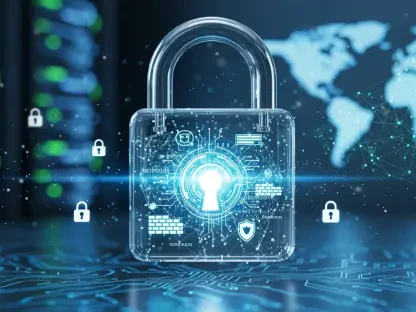A recent ransomware incident involving Ingram Micro emphasizes the vulnerability of prominent IT infrastructures to cyber threats. The attack, attributed to the SafePay ransomware group, significantly disrupted global services, impacting Ingram Micro’s solution providers, resellers, and managed service provider (MSP) customers during a holiday weekend. Such timing points to the strategic approach of ransomware actors seeking to exploit reduced vigilance in high-value organizations.
Unfolding of the Incident
Initial Disruptions and Acknowledgment
The attack on Ingram Micro unfolded with growing concerns on Thursday when customers encountered challenges accessing the company’s digital platforms to conduct business transactions. The disruption persisted beyond two days, leading to widespread speculation as the company initially remained silent, fueling anxiety and uncertainty among its clientele. It was not until Saturday evening that Ingram Micro officially confirmed the ransomware attack, acknowledging the disruptions that had plagued its operations.
Following the confirmation, immediate steps were taken by the company to contain the situation. Ingram Micro secured the affected systems by taking some offline and implementing mitigation strategies with the aid of seasoned cybersecurity experts. They also informed law enforcement agencies to maintain transparency and ensure compliance with legal standards. By taking these decisive actions, Ingram Micro demonstrated a proactive stance in addressing the cyber crisis, reassuring stakeholders of their commitment to resolving the disruption swiftly and effectively.
Response and Restoration Efforts
In accordance with regulatory requirements, Ingram Micro filed a form 8-K with the US Securities and Exchange Commission regarding the attack. Additionally, the company established a dedicated page to provide updates on the progress of restoring services. By Monday, systems were gradually becoming operational, with orders being processed through email and phone communication from various international locations, including the UK, Germany, France, Italy, Spain, Brazil, India, China, and later expanding to Canada and Austria.
This phased restoration of services highlighted Ingram Micro’s diligent efforts to recover from the ransomware attack, underscoring their capability to mitigate such disruptions. By ensuring ongoing communication with its clients and stakeholders, the company could rebuild trust and strengthen its resilience in the face of similar challenges in the future. The coordinated approach to restore operations not only reflected Ingram Micro’s commitment to service continuity but also illuminated the broader implications for other organizations in reinforcing their cybersecurity measures.
SafePay Ransomware: A Growing Threat
Ransomware’s Modus Operandi
The Ingram Micro ransomware incident serves as a stark reminder of the exploitative tactics ransomware groups employ, particularly during periods traditionally marked by reduced vigilance, such as public holidays. Over recent years, threat actors have increasingly targeted MSPs due to their extensive connectivity to client networks. Attacking a single MSP can, therefore, have widespread repercussions, impacting its numerous downstream customers.
While the SafePay group has yet to publicly claim responsibility for the attack against Ingram Micro, their established methodology and the ransom note allegedly associated with the assault align with their activities. Active since the year prior, SafePay rapidly emerged as a significant cyber threat, accounting for a notable percentage of ransomware attacks. The group’s preference for direct involvement, rather than utilizing the ransomware-as-a-service (RaaS) model, underscores their unique operational approach and intent to maintain control over their malicious activities.
Industry Impact and Implications
Ingram Micro’s extensive history in IT distribution, spanning decades, has seen significant transformations in ownership and operations. Acquired in 2016 by Tianjin Tianhai Investment, a segment of HNA Group from China, the company was later purchased by the private equity firm Platinum Equity in 2021. These transitions, culminating in a public offering last year, raised substantial funds, marking new chapters in Ingram Micro’s business evolution.
However, the recent ransomware incident unveils critical considerations for the industry. Large IT distribution networks, with their intricate channels and substantial connectivity, present lucrative targets for ransomware actors. This incident underscores the pressing need for robust cybersecurity measures and resilience plans, particularly during periods of anticipated vulnerability. By doing so, companies like Ingram Micro can safeguard their invaluable infrastructure and the diverse ecosystems dependent on them against the growing and evolving cyber threat landscape.
Lessons Learned and Future Directions
Reinforcement of Cybersecurity Protocols
The Ingram Micro ransomware incident underscores the potent threat ransomware poses to prominent digital infrastructures and the far-reaching consequences for organizations with vast connections. As more enterprises increasingly rely on MSPs and IT distributors, the cybersecurity measures employed by these entities play a crucial role in determining their clientele’s overall security posture. Consequently, fortifying defenses against ransomware attacks has become paramount.
To effectively deter such threats, companies must maintain heightened readiness, especially during periods traditionally marked by reduced vigilance, such as holidays, when cybercriminal tactics are most effective. Implementing comprehensive security protocols, reinforcing system vulnerabilities, and ensuring robust incident response plans can significantly enhance an organization’s resilience against ransomware attacks. By fostering a security-centric culture within the organization, companies can better protect themselves and their clients.
Future Preparedness and Strategic Actions
A notable ransomware attack targeting Ingram Micro has highlighted the vulnerability of major IT infrastructures to digital threats. This incident involves the SafePay ransomware group, which managed to significantly disrupt global services that rely heavily on Ingram Micro’s support. This disruption affected solution providers, resellers, and managed service provider (MSP) customers, posing serious operational challenges. The fact that the attack occurred during a holiday weekend suggests a calculated move by ransomware actors to exploit times when companies are potentially less vigilant due to reduced staff presence and oversight. Such incidents underscore the growing threat landscape for high-value tech firms, indicating the necessity for more robust cybersecurity measures. As these threats evolve, organizations must increase their vigilance and prioritize cybersecurity strategies to mitigate risks and ensure that critical operations continue smoothly, even during periods of reduced attention, like holidays.









